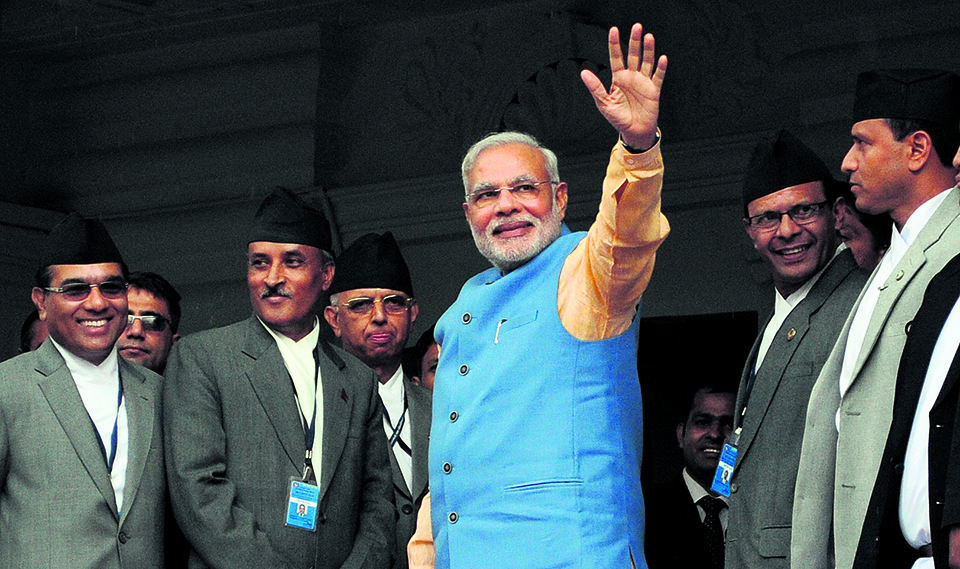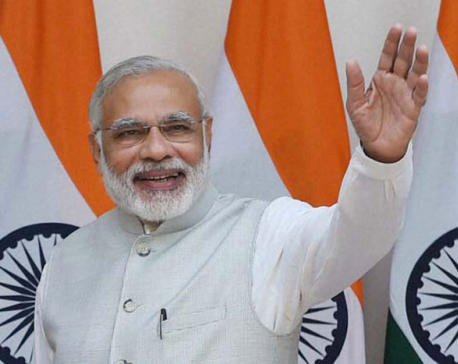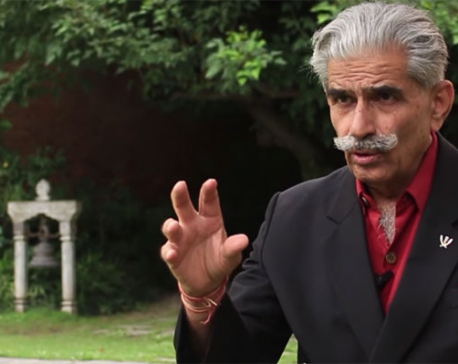
OR

India’s traditional sphere of influence in Nepal, based on cultural, religious, social and political ties which bound the two states, is fraying. How did this happen?
India’s sphere of influence in Nepal is waning. Chinese interests are growing. There is increased foreign direct investment from China and proactive government-to-government contact that are translating into broader partnerships across businesses, politics and society.
The Chinese aren’t just arriving—they have already arrived.
The resounding victory of the communist coalition has raised concerns that Chinese interests will be even more pronounced. Leaders of the communist coalition have publicly stated that they intend to pursue a neutral policy of engagement with both neighbors. We should take them for their word. The outcome of these elections, and other political developments, shouldn’t be viewed as a proxy for competing Indian and Chinese interests in Nepal.
But that doesn’t change the fact that India is rapidly losing ground in Nepal. Its historical sphere of influence in Nepal—the cultural, religious, social and political ties—that bound the two countries is fraying.
How did this happen? How is it that two countries (Nepal and India) with such deep cultural, social, political and economic ties woven together over centuries of shared history find themselves being torn apart by the tantalizing promises of a third country that speaks a different language and eats a different food whose name we can’t even pronounce properly?
To answer this, you have to rewind some two and half decades to a lazy summer I spent in Kolkata (Calcutta then).
Memory for life
It was the best summer of my life. That was the only time in my life I was thankful for the skin ailment with which I was born. It was 1991, the summer break before my 12th grade. My parents left me in Kolkata for the summer to complete the medical treatment that was to stretch a few months. I found local companions and spent every day aimlessly wandering the streets of Kolkata. A new metro had just opened but the city’s old charm still hung over every street café, library and book store. I fell in love. For many years that followed, the tearful farewell she gave me at the end of my visit would remain the most cherished memory of my life.
None of those friendships remain. But I still seek out every reason to visit Kolkata.
For the purpose of illustrating Indo-Nepal relationship, my wistful recollection of that summer is less important. The more important fact is with whom I stayed.
I had spent that summer in Kolkata with the family of my father’s business associates—not relatives, not family friends but business associates. When they travelled to Nepal, they stayed with us. That was how business was done. Business spilled over into homes and families.
It wasn’t just my family. For millions of small, medium and even large enterprises across Nepal, business relationships with Indian counterparts were more than just transactions. It intertwined homes and families. Business associates showed up at each other’s family functions. The lines between business and familial relationships blurred.
These relationships spawned across Nepal. It extended beyond ethnic Indian communities (e.g., Madhesis) who had active familial relationships in India. Millions of Nepalis without an uncle, aunt, brother or sister married into India, or even without a relative there, were actively engaged with India. These business-to-family networks were the bedrock of Indo-Nepal relationships.
Juxtapose this against a more contemporary view.
Small wonders
I met a single mother with two kids who runs a small children’s clothing store in a relatively upscale market complex in Kathmandu. She flies to China every quarter, selects her purchases and has it shipped by road. She quietly places English sounding labels on the products so it doesn’t come across as cheap Chinese wares.
I was awed by her fortitude and determination. It is hard enough for a single mother with two kids to endure Kathmandu’s harsh social stigma. Running a successful small business with imports from China was even more impressive, or so it seemed.
But there are many others like her, not single moms but small businesses that have begun importing from China. Within Nepal’s expanding trade, China is now playing a key role. India continues to retain the dominant share, accounting for approximately two-thirds of Nepal’s imports and exports in fiscal 2016-2017. But China’s share in Nepal’s external trade has been growing. Over the past five years, its exports to Nepal have more than doubled and currently represent approximately 13 percent of all Nepali imports.
Consider China’s trade with Nepal in this context. Trade with China has been the fastest growing segment over the last five years. Indian imports enter through 22 border points. In contrast, there are only two official border points with China, that too barely working. Imagine if Nepal and China had 22 border crossing points—except Baba Ramdev’s products there might be nothing to buy from India.
To understand the waning influence of India, you also have to look beyond the numbers on trade. Who is benefitting from this trade? Previously, only big traders could import Chinese products. While India catered to small traders, Chinese imports came through the sea and required large volumes. Today, small traders purchasing retail volumes can just as easily access the Chinese marketplace. The single mother with two children buying just enough to stock her shop for a quarter is the frontline beneficiary of growing trade with China.
Need a makeover
As Nepal’s trade with China expands, India runs the risk of being irrelevant to a vast majority of Nepalis, particularly those without strong direct family relationships in India. This could be destabilizing for Nepal.
Ethnic communities with strong direct family relationships in India will want to remain rooted in India. The rest of country will want to seek out better trade and economic opportunities with China—Combustible stuff in a sensitive geopolitical region.
India’s response to its waning influence has been a schizophrenic mix of heavy-handedness and unbounded generosity: A blockade stemming from a last-minute reservation against the constitution, along with a commitment to match the proposed Chinese spending on Nepal’s infrastructure, dollar for dollar.
Both of these are losing strategies. India cannot compel goodwill and it can’t buy goodwill. Today, as India faces the risk of being rendered irrelevant to many areas of Nepal, it must recreate the bonds that spawned across Nepal (not just among the ethnically similar communities in Nepal).
Those bonds were built on the opportunities extended by trade. These opportunities allowed Nepali, including those that were not ethnic Indians, to believe in the promise of India. The promise of India cannot be renewed by restricting Nepali trade with China or by seeking to out-compete Chinese investment in Nepal.
Indo-Nepal relationship needs a fresh modern makeover. For the last generation, the business-to-family relationships were built around trade. The new generation of business-to-family relationship must be around services and digital economy. Nepali businesses, youths and emerging enterprises must be supported to plug into India’s accelerating services and digital economy. Indian companies must be given an opportunity to modernize Nepal’s still rudimentary digital economy. Nepali youths must be the beneficiaries of this integration.
Across the accelerating digital hubs of India, a new generation of Nepalis must be able to spend their lazy summer in the homes of their parent’s business associates. For that, we need an inviting host and a new vision.
Bishal_thapa@hotmail.com
You May Like This

Nepal good friend of India: Deuba, India ready to support Nepal's development: Modi
NEW DELHI, Aug 24: Prime Minister Sher Bahadur Deuba, who is currently on a five-day state visit of India, said... Read More...

India: Making sense of Aditya's rise
For those hoping that India's Prime Minister Narendra Modi would more perceptibly shift towards the development plank rather than the... Read More...

China outrunning India in Nepali politics, India mulling a new strategy
With an unprecedented activeness of China, India seems preparing to counter it. India's Nepal Affairs expert and retired Indian Army... Read More...





Just In
- Manakamana Cable Car service to remain closed tomorrow
- Nepal govt’s failure to repatriate Nepalis results in their re-recruitment in Russian army
- Sudurpaschim: Unified Socialist leader Sodari stakes claim to CM post
- ED attaches Raj Kundra’s properties worth Rs 97.79 crore in Bitcoin investment fraud case
- Newly-appointed Auditor General Raya takes oath
- CM Mahara expands Cabinet in Lumbini Province
- FinMin Pun addresses V-20 meeting: ‘Nepal plays a minimal role in climate change, so it should get compensation’
- Nepalis living illegally in Kuwait can return home by June 17 without facing penalties















Leave A Comment